Realizing children’s rights in Cameroon
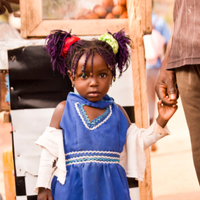
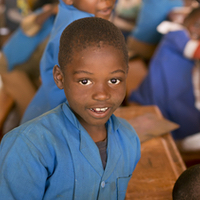
Cameroon signed on October 27, 1990, and ratified on January 11, 1993, the Convention on the Rights of the Child. This ratification marks the willingness and commitment of the authorities to create an environment favorable and conducive to the full development of every child. Cameroon, despite this strong willingness, faces security, economic and cultural challenges that hamper the implementation of children’s rights.

Children’s Rights Index: 5,84 / 10
Black level: Very serious situation
Population: 25,9 million
Pop. ages 0-14: 42.1%
Life expectancy: 59.29 years
Under-5 mortality rate: 82.57‰
Cameroon at a glance
The Republic of Cameroon is a country located in Central Africa at the bottom of the Gulf of Guinea. Cameroon is made up of several cities including Yaoundé the political capital, Douala the economic capital, Bafoussam, Garoua, and Maroua. Covering an area of 475,442 km², Cameroon is bordered to the north by Chad, to the east by the Central African Republic, to the south by The Republic of Congo, Gabon and Equatorial Guinea, and to the west by Nigeria (Presidency of the Republic of Cameroon, nd).
With a population of 25.9 million (Ministry of Europe and Foreign Affairs, 2021), Cameroon is a country strongly marked by its diversity. It is home to 240 ethnic groups divided into three large groups (Bantu, Semi-Bantu, Sudanese) and corresponds to 240 national languages (Presidency of the Republic of Cameroon, n.d.).
On the political level, in particular domestic politics, the Cameroon People’s Decomocratic Movement (RDPC in French), the party of President Paul Biya, has been in power since 1982 and won the latest elections by an absolute majority. President Biya was reappointed in the presidential election of October 7, 2018, where he won 71.28% of the votes cast (Ministry of Europe and Foreign Affairs, 2021).
Regarding foreign policy, Cameroon has in recent years been confronted with attacks by the Boko Haram group in the Far North and a separatist movement in the English-speaking regions. These attacks led the Cameroonian authorities to strengthen the military presence in the north of the country. Member of the Lake Chad Basin Commission, Cameroon participated in the Paris summit for security in Nigeria in May 2014. The action of the Cameroonian armed forces, as well as the establishment in 2016 of a joint multinational force by the countries of the region (Nigeria, Chad, Cameroon, Niger, Benin), have helped reduce the pressure exerted by Boko Haram, but the threat remains active (Ministry of Europe and Foreign Affairs, 2021).
Despite stability and progress at the national level, Cameroon also faces social inequalities, and challenges in terms of social inclusion (World Bank Group, 2021). In addition, the relatively high infant mortality rate, underage marriage, and birth registration (OHCHR, 2017) are some of the challenges Cameroon must make in order to realize and guarantee children’s rights in accordance with its international commitments.
Status of children’s rights[1]
According to UNICEF, 4.4 million people, of which 2.2 million are children, are in need of humanitarian assistance due to permanent and protracted crises linked to conflict, displacement and periodic epidemics (UNICEF, 2021).
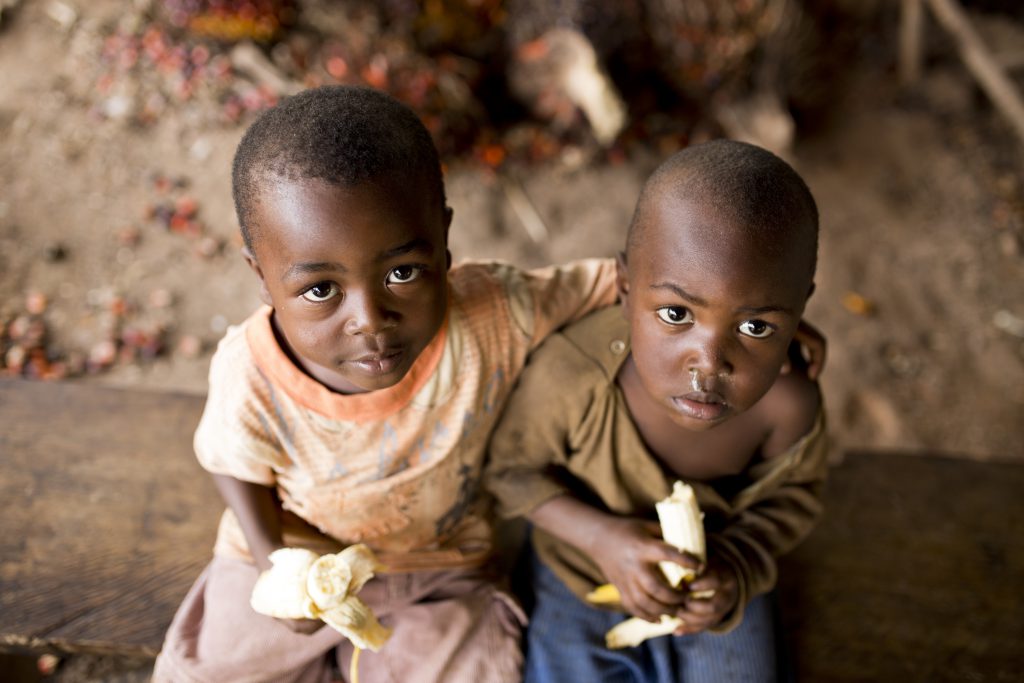
The humanitarian situation in Cameroon therefore remains worrying. Cameroon is affected by three complex and simultaneous humanitarian situations: the violence of Boko Haram in the Far North region; the influx of refugees from the Central African Republic to the eastern regions (Adamawa, North and East); violence in the North-West and South-West regions with spillover effects in the West and Coastal regions (Child protection Global protection cluster, n.d.).
In addition, Cameroon faces some key challenges, including birth registration, violence against children, child marriage, economic exploitation of children (OHCHR, 2017) and access to education (Cameroon Education Cluster, 2020). These challenges represent a major issue in the guarantee of the rights of children and the creation of an environment favorable to their development and their full blossoming.
Meeting the needs of children
Right to health
In Cameroon, children have the right to health and health services. Article 24 of the Convention of the Rights of the Child (CRC) stipulates that the child has the right to enjoy the highest attainable standard of health and to benefit from the services necessary for the treatment of illnesses. Article 14 (1) and (2) of the African Charter on the Rights and Welfare of the Child affirms the same role, namely to protect the right of the child to health. The State has made efforts to protect the child’s right to health by ratifying other conventions. Cameroon is a party to the Alma Ata Declaration of 1978 and thus adheres to the ideal of primary medical care (Ekwen, 2015).
Despite these efforts, the health sector still faces many challenges. Infant mortality remains relatively high, with a rate of 75% for children under 5 and 50% in general (UNICEF, 2019). In addition, children in Cameroon are not immune to certain diseases that greatly affect children from underprivileged countries, such as malaria and diarrhea. Malaria continues to have a devastating impact on children’s health and the livelihoods of populations (National Institute of Statistics, Ministry of Public Health, 2018).
To this end, 32% of consultations among children under 5 and 21% of consultations among pregnant women are due to malaria (National Institute of Statistics, Ministry of Public Health, 2018). In addition, 45% of hospitalizations and 12% of deaths in health facilities in Cameroon are due to malaria (National Institute of Statistics, Ministry of Public Health, 2018). The negative impact of diarrhea in the country is by no means insignificant. This disease affects 5% of children under 6 years old, 20% of children 6 to 11 years old and 21% of children and young people aged 12 to 23 years old. Guaranteeing the right to health of children, especially those who constitute a particularly vulnerable segment of the population, is a major challenge for the Cameroonian authorities.
Right to education
Like the rest of the continent, Cameroon’s education system has achieved impressive results since the end of the colonial era, increasing literacy rates and providing free elementary education to almost all of its growing young population. Yet despite this, problems remain. Lack of quality education, as well as corruption, continue to affect most levels of the system, while access to secondary and higher education remains out of reach for many of the country’s poorest communities (Fallwickl, McNally, & Mackie, 2021.
In Cameroon, social assistance in the education sector is limited to certain beneficiaries (e.g. civil servants, academically distinguished students, children of disabled parents, etc.), and / or to workers in the formal economy, and without special coverage for the poor, orphans and individuals outside the formal economic structure.
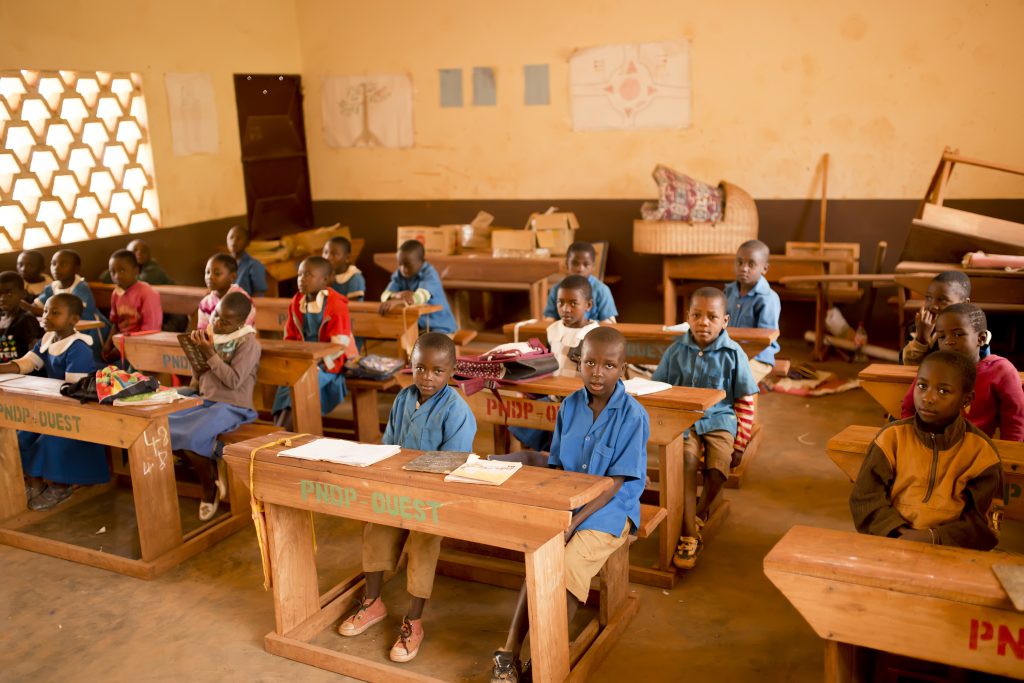
In addition, two main factors seriously compromise the right to education of children through the violence they engender. First, the armed group Jama’atu Ahlis Sunna Lidda’awati wal-Jihad, commonly known as Boko Haram, whose name translates to “Western education is prohibited” in the Hausa language, accelerated attacks in the country in 2014. The group, which was founded in neighboring northeastern Nigeria, established itself in the Far North region of Cameroon in 2009 (Global Coalition to Protect Education from Attack, 2018).
United Nations Children’s Fund (UNICEF) has drawn attention to the increase in attacks on schools in the North West and South West regions of Cameroon (Forku, 2020). These attacks involve kidnappings, harassment and killings of students and teachers (Forku, 2020).
The second cause of the violence that has affected education in Cameroon is the result of internal tensions between Cameroon’s French-speaking majority and its English-speaking minority. In October 2016, lawyers in the Anglophone Northwest and Southwest regions went on strike in response to the perceived marginalization of the Anglophone minority, especially the lack of legal resources in English (Global Coalition to Protect Education from Attack, 2018).
Journalists, students, teachers and others in English-speaking regions have increased the scope of the protests to include the imposition of French-language education. National security forces responded violently, killing at least four people in a crackdown in December 2016. This violence resulted in more than a year of general strikes and school closings by English-speaking school authorities, as well as boycotts of schools still operating in other regions (Global Coalition to Protect Education from Attack, 2018). Article 29 of the Convention on the Rights of the Child aims to guarantee the right to education of the child. It is essential to preserve this right and to ensure safe access to schools for children and teachers.
Right to Identity
Every child born in Cameroon has the right to a free birth certificate within 90 days of birth. However, this is often not the case. In most cases, parents, for whatever reason, do not meet this deadline and often have to resort to a costly process called a “supplementary judgment”, in which the government asks for 4,500 CFA francs (about 7.70 US dollars) per replacement birth certificate. This sum is simply too expensive for many parents from rural areas of Cameroon (Ofori-Amanfo, 2020).
More than 2 million children in this country of 25 million people do not have the required birth certificates (Kindzeka, 2020). Cameroon attributes the decline in birth registration to conflicts affecting parts of the country and the COVID-19 pandemic (Kindzeka, 2020).
According to the United Nations, a birth certificate is a vital official document that establishes the name, age and nationality of a child. Without this document, a child may have difficulty obtaining education, health care and other public services (Kindzeka, 2020). The birth certificate is therefore an important document to create an environment allowing each child to access his fundamental rights.
Risk factors -> Country-specific challenges
Exploitation and child labor
Almost 60 million children are engaged in child labor in sub-Saharan Africa (Plan International, 2017). Cameroon is a country of origin, transit and destination for the trafficking of children from neighboring countries in Central and West Africa (US Department of Labor, 2020). Children are thus subjected to the worst forms of child labor, including commercial sexual exploitation, sometimes as a result of human trafficking.
They are also recruited by Boko Haram, with a view to their use in armed conflicts, as suicide bombers and cohabiting partners (US Department of Labor, 2020). Finally, children are forced to work in agriculture for the production of cocoa, cotton, onions and tea, as well as in fishing, animal husbandry, domestic work, spare parts stores, artisanal gold mines and gravel quarries, street vending, and construction, which is sometimes as a result of human trafficking (US Department of Labor, 2020).
This high prevalence of child labor is due to a number of factors. Firstly, household poverty is one of the most frequently cited causes of child labor (Mbebi, 2018).
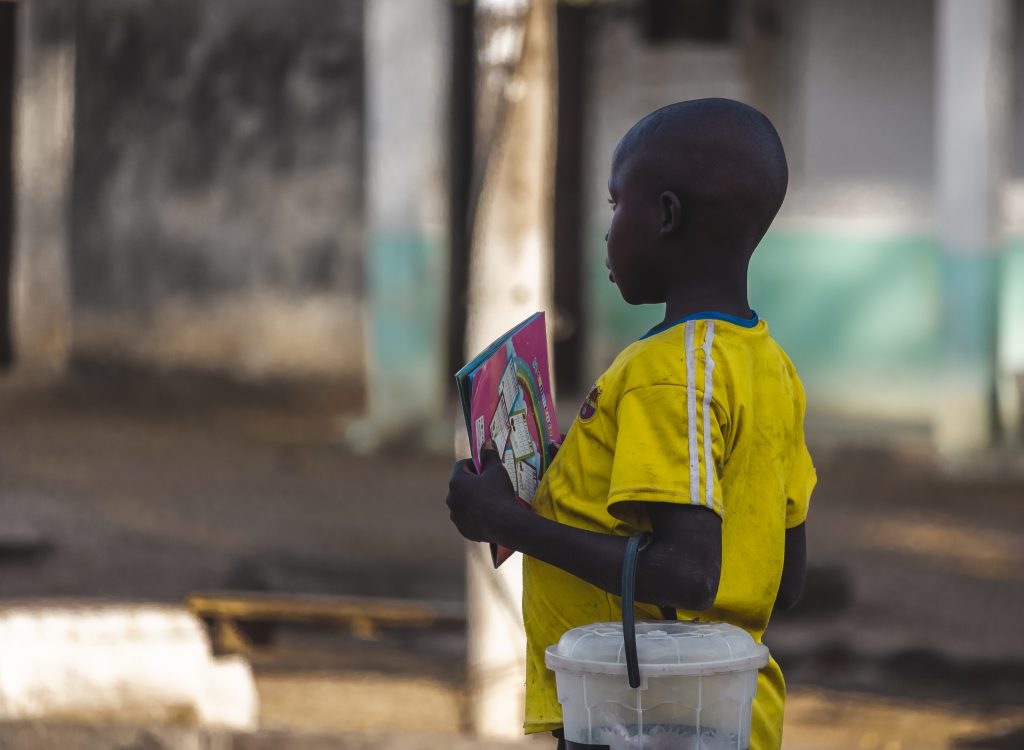
In Cameroon, 37.5% of the population lives below the poverty line (Silveira, 2021). Thus, when parental resources are low, it becomes necessary to put children to work to ensure a minimum level of subsistence. Child labor is therefore considered by parents as a commodity that the household uses to increase its income, when it is low (Mbebi, 2018). Secondly, income volatility due to unexpected negative events reduces children’s education level and increases their labor supply, with the aim of providing additional income to improve family well-being (Mbebi, 2018).
In 2020, Cameroon made moderate progress in its efforts to eliminate the worst forms of child labor. The government has ratified the optional protocol of the United Nations Committee on the Rights of the Child on the sale of children, child prostitution and child pornography. Cameroonian police also arrested members of an international trafficking network operating in Cameroon, Gabon, Equatorial Guinea and Chad. In addition, the Forever Chocolate program, which provides school kits and family livelihood support to tackle child labor in cocoa production, has been extended to Nkondjock, Sangmelima, Mbalmayo and Ayos.
Despite these commendable efforts, 43.7% of children aged 5-14 are in work and 42.4% of children aged 7-14 work while attending school. The dignity and rights of children must be preserved, in particular in accordance with Cameroon’s various international commitments. To this end, special attention must be paid to children who are victims of the worst forms of child labor.
Child marriage
Child marriage is defined as the marriage of a girl or boy below the age of 18 and refers to both formal marriages and informal unions in which children under the age of 18 live with a partner as if they were married (UNICEF, 2017). Child marriage affects both girls and boys, but girls are disproportionately affected.
With regard to the age of marriage, Article 52.1 or Ordinance No. 81/02 of June 29, 1981 on the organization of civil status and various provisions relating to the status of persons, prohibits the marriage of girls under 15 and boys under 18 without a special exemption on serious grounds, granted by the competent authority (The World Organization Against Torture). Cameroonian law discriminates against girls by encouraging them to leave their families at an early age and allowing them to marry at the age of 15 (The World Organization Against Torture, n.d.).
In its 2016 report, UNICEF estimated that 13% of Cameroonian girls are married before the age of 15 and 38% before the age of 18. The majority of girls married before their 18th birthday are victims of forced and early marriages. Among adolescents, 22% were married or in union, and births at age 18 accounted for 28% of all newborns (International Catholic Child Bureau, 2018).
Child marriage violates the rights of children and puts them at high risk of violence, exploitation and abuse. It is therefore essential to ensure the elimination of the discrimination that remains against girls, especially with regard to the legal age of marriage.
Female genital mutilation (FGM)
The practice of female genital mutilation constitutes a serious attack on the physical and psychological integrity of the child who is subjected to it. In some cases, the mutilations cause serious infections that can be fatal to the child (The World Organization Against Torture, n.d.). This practice, which mainly affects young girls, still exists in certain regions of Cameroon, particularly in the far north of the country (The World Organization Against Torture). It is usually performed on girls aged 6 to 8. Studies carried out by the World Health Organization (WHO) and the United Nations Population Fund (UNPFA) reveal that the practice of excision is very widespread in Cameroon. Thus 20% of women living in Cameroon were victims of genital mutilation in 2000 (The World Organization Against Torture, n.d.).
An alarming fact concerns the intensification of FGM in some communities, especially those around Kousseri (Kindzeka, 2021). According to the government, COVID-19, the country’s separatist crisis, and Boko Haram terrorism have ended campaigns about the dangers of the practice and caused providers to return to FGM, which had been abandoned (Kindzeka, 2021).
Written by Habib Kouamé
Translated by Khalid Aada
Proofread by Sharon Rees
Last updated on October 14, 2021
References:
Brun, D. (2019). Data on gender equality. Inter-agency GenCap.
Cameroon Education Cluster. (2020). Cameroon Education Cluster Strategy North West and South West Regions 2020.
Ekwen, L. (2015). Protection of Children’s Rights in Cameroon. Munich: GRIN.
Global Coalition to Protect Education from Attack. (2018). Education Under Attack 2018 – Cameroon.
Institut National de la Statistique, Ministère de la Santé Publique. (2018). Enquête Démographique et de Santé du Cameroun (EDSC-V).
International Catholic Child Bureau. (2018). Exposé écrit présenté par International Catholic Child Bureau, organisation non gouvernementale dotée du statut consultatif spécial.
Mbebi, E. (2018). Les déterminants du travail des enfants au Cameroun : le rôle du milieu de résidence et du genre. Revue d’économie du développement, pp. 5-52.
Olivier, E. M. (2018). Les déterminants du travail des enfants au Cameroun : le rôle du milieu de résidence et du genre . Revue d’économie du développement, pp. p. 5-52.
The World Organisation Against tOMCT. (s.d.). Rights of the Child in the Republic of Cameroon.
The World Organisation Against Torture. (s.d.). Rights of the Child in the Republic of Cameroon. Genève.
UNICEF. (2021). Cameroon Humanitarian Situation Report n°7.
[1] This article does not in any way claim to give a complete or representative account of the rights of the child in Cameroon. Indeed, one of the main difficulties is due to the little up-to-date information on children in Cameroon, most of which is neither reliable, nor representative, or is outdated or simply non-existent.

